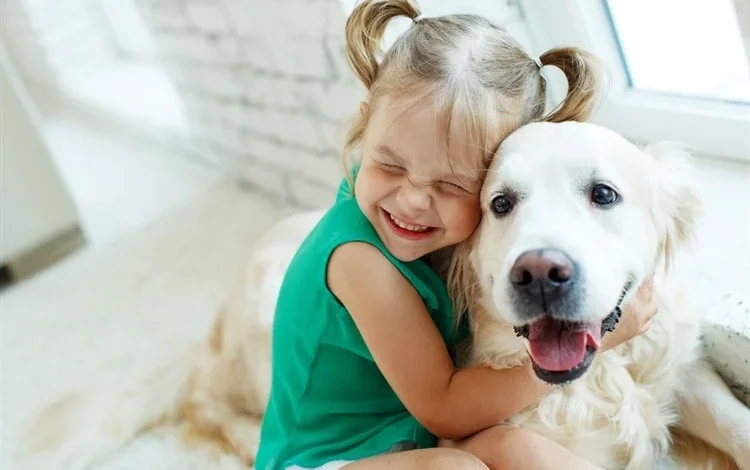Pandemic Puppies: The Surprising Mental Health Benefits for Children

When the world shut down in early 2020, families across the globe faced a new reality. Schools closed, playgrounds emptied, and the once-ordinary joys of birthday parties or weekend outings became memories of a “before time.” In this loneliness, something unexpected happened—millions of families brought home “pandemic puppies.” These furry companions didn’t just fill homes with chaos and cuteness; they played a profound role in shaping children’s mental health during one of the most unsettling times in modern history.
The rise of pandemic puppies was more than just a trend; it was a movement. Dogs became more than pets—they were teachers, therapists, and best friends to children who suddenly lost the structure of daily life. Let’s explore how these four-legged companions impacted kids’ emotional well-being, resilience, and growth during the pandemic.
The Pandemic Puppy Boom
Animal shelters, breeders, and rescues reported an unprecedented surge in adoption requests during the lockdown period. According to the American Pet Products Association, nearly 23 million U.S. households—almost one in five—adopted a new pet during the pandemic. A large share of these were puppies.
For children suddenly pulled out of classrooms and isolated from friends, the arrival of a playful, tail-wagging puppy brought life back into the home. Kids found themselves with new routines—feeding, walking, and training a puppy—at a time when so much of their world felt unpredictable.
Companionship During Isolation
One of the hardest challenges for children during COVID-19 was loneliness. Friends were accessible only through screens, and extended family members often became distant figures seen through windows or video calls. Puppies helped bridge that gap.
A pandemic puppy doesn’t judge, doesn’t care about social distancing, and always offers affection. For a child feeling isolated, having a dog to cuddle provided a sense of warmth and connection. Psychologists note that the simple act of petting a dog can release oxytocin, the “bonding hormone,” reducing stress and increasing feelings of safety.
Boosting Responsibility and Routine
When everything else felt out of control, puppies created a new rhythm. Children suddenly had real responsibilities—filling the food bowl, letting the dog out, or joining daily walks. This structure gave kids purpose and a sense of accomplishment, both of which are critical for mental health.
Parents often reported that their children became more responsible during lockdown. Even younger kids enjoyed helping with small tasks, like brushing their puppy or refilling water bowls. For teenagers, caring for a puppy provided a healthy distraction from screen fatigue and online classes, giving them a reason to step outside and connect with nature.
Reducing Anxiety and Stress
The pandemic wasn’t just inconvenient for kids; it was frightening. News headlines, masks, and constant reminders about safety created an atmosphere of worry. For many children, this triggered anxiety.
Here’s where pandemic puppies shined. Studies show that interacting with dogs lowers cortisol levels—the body’s stress hormone. When a child hugged their puppy during a moment of panic or sadness, they often experienced immediate comfort. Puppies became emotional anchors, teaching children that comfort could be found in the simplest acts of love and presence.
Encouraging Physical Activity
With sports, playgrounds, and physical education canceled, many children slipped into sedentary lifestyles. Puppies, however, demand movement.
Daily walks, playful backyard games, and fetch sessions got kids off the couch and moving again. This physical activity didn’t just support physical health—it improved mental health too. Exercise is strongly linked to reduced anxiety and depression in children, and pandemic puppies gave kids a fun, natural reason to stay active.
Strengthening Emotional Expression
Children sometimes struggle to articulate emotions like sadness, anger, or confusion. Puppies gave them a safe outlet. A child could cry into their puppy’s fur without judgment or tell their dog about frustrations with schoolwork without fear of being misunderstood.
In this way, pandemic puppies acted as emotional translators, helping kids practice vulnerability and expression. For children with pre-existing mental health challenges, such as ADHD or autism, this emotional bond often provided an even deeper sense of security.
Family Connection Through Puppies
Beyond the child-puppy bond, these dogs also strengthened family connections. Training a puppy required teamwork, and family members often collaborated on feeding schedules, potty training, or naming the new pet.
For many households, this created a shared purpose at a time when tension was high. Families who might otherwise have drifted into their own separate rooms during lockdown found themselves together, laughing at puppy antics or negotiating responsibilities. This sense of togetherness had a protective effect on children’s mental health, as they observed cooperation and empathy modeled by parents and siblings.
Challenges of Pandemic Puppies
Of course, raising a puppy in the middle of a global crisis wasn’t without challenges. Children also witnessed the frustration of chewed furniture, nighttime barking, and house-training accidents. In some ways, this was a valuable lesson—it taught kids that love and responsibility come with difficulties.
Some families struggled when pandemic routines faded, and kids returned to school. Puppies that had grown accustomed to constant attention developed separation anxiety, and children felt guilty leaving them behind. These adjustments sometimes caused new stress, but they also encouraged conversations about resilience, patience, and problem-solving.
Long-Term Impact on Children’s Mental Health
Now that several years have passed since the start of the pandemic, researchers are beginning to assess the long-term effects of pandemic puppies on children. Early findings suggest that kids who formed close bonds with their pets during lockdown may carry those emotional benefits well into adulthood.
These children often display greater empathy, stronger coping skills, and an appreciation for the importance of care and connection. Even as the world reopened, the lessons of companionship, responsibility, and emotional support remained with them—lessons taught not in a classroom, but through wagging tails and wet noses.
Conclusion: A Paw-Print on a Generation
The pandemic will be remembered as one of the most disruptive times in modern history. But alongside the loss and uncertainty, there were moments of resilience, growth, and unexpected joy. Pandemic puppies were one of those bright spots.
For children, these dogs were more than pets—they were playmates, comforters, exercise buddies, and emotional lifelines. They helped kids navigate loneliness, taught responsibility, and gave unconditional love when it was needed most.
As we look back, it’s clear: pandemic puppies didn’t just fill homes with barking and wagging tails. They left a permanent paw-print on children’s mental health, shaping a generation with lessons of love, care, and resilience that will outlast the pandemic itself.



